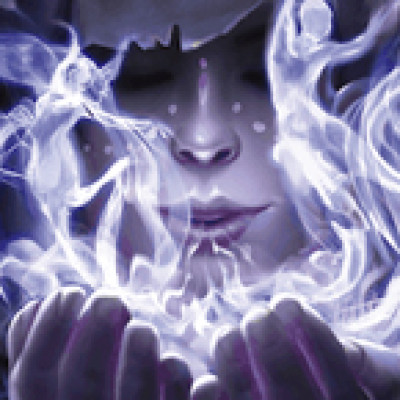Fai joined Flesh and Blood in the Uprising set as the game's second adult Ninja (but 4th overall). Accentuating a staple of the Ninja playstyle, Fai brings long combat chains to the forefront. He also rewards tight play and deck optimization with a high level of aggression in every game.
Fai focuses on consistency and building the biggest combat chain possible. To do that, he uses a mixture of starters (Draconic attacks that automatically have go again), extenders (powerful cards that push your turn beyond its normal range), and finishers (devastating attacks that you play at the end of your combat chain). Getting this mix of effects right is the primary goal of any player wanting to build and play Fai, so lets take a look at each element in turn to better understand how they work together.
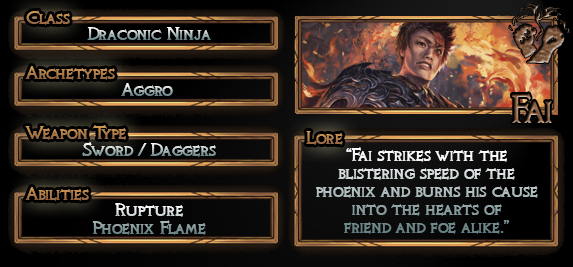
A Fiery Disposition
As a Draconic Ninja, Fai does not share the same affinity for combo cards as his friend Katsu. Instead, Fai builds his own combat lines with powerful synergies and a recursive damage source in the form of the Phoenix Flame.
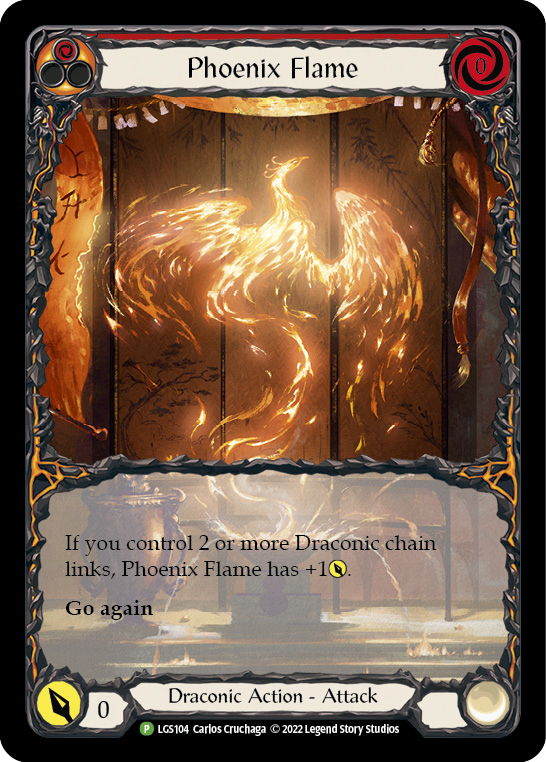
On its own, the Phoenix Flame seems quite innocuous, given that it has a base attack power of 0. But do not underestimate its potential.
First and foremost, we have Fai's ability, which reads:
You may start the game with a Phoenix Flame in your graveyard.
Once per Turn Instant - (R)(R)(R): Return a Phoenix Flame from your graveyard to your hand. This ability costs (R) less for each Draconic chain link you control.

This enables any Phoenix Flame in your graveyard to constantly return to your hand, as long as you can pay the cost. A single Phoenix Flame on its own may not be worth anything, but playing a Phoenix Flame as part of your combat chain every single turn means you're adding 7-15 damage to your output over the course of the game without wasting a single card.
The trick to taking full advantage of Fai's ability is getting to those three Draconic chain links. Fortunately, Ninjas already want to play aggressively, so Fai's ability simply rewards you for that. In addition, Fai's preferred weapon helps to satisfy this condition, so lets talk about that next.
Forged in Flames

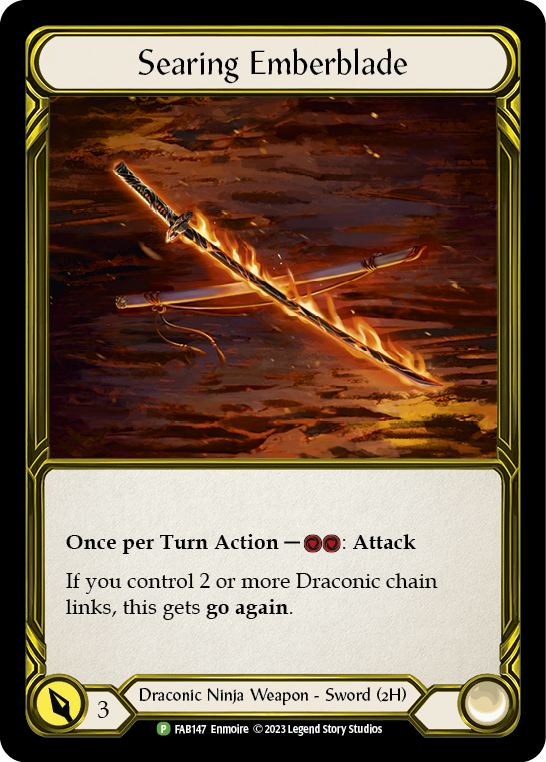
Fai has access to a range of weapons that all play nicely with the card pool to threaten multiple attacks per turn, much like the other Ninjas in the game. However, most Fai decks revolve around the Searing Emberblade for a couple reasons:
- It represents 3 damage for 2 resources, which is 1 point better than a pair of Harmonized Kodachis, and
- It adds another Draconic chain link to your turn, which reduces the cost of fetching a flame from your graveyard, adding even more overall damage to your turn.
While there are still strong arguments to be made in favor of running Harmonized Kodachi in a Fai deck, Searing Emberblade organically aligns with the synergies Fai is already using.
Fai has access to two very powerful headpieces in the form of the two Ninja masks: Mask of Momentum and Mask of the Pouncing Lynx. These allow Fai to generate enormous value and card advantage against his opponents by doing what he already wanted to do: attack.

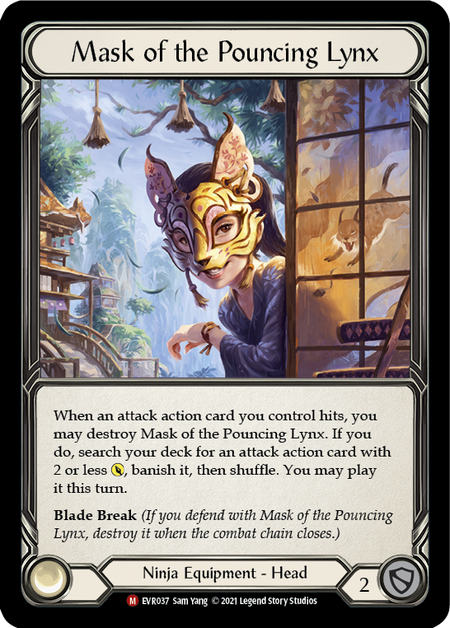
Mask of Momentum allows you to draw a card if you ever hit three times in a row with attacks. This recurring value can generate a lot of advantage during a longer game against an opponent who doesn't like to block, as it either forces them to give you cards and armor or else it gives you more cards to attack with.
Mask of the Pouncing Lynx grants you a huge, one-time power spike by letting you fetch out a key card when you hit with an attack, at the cost of destroying the mask. Often, this will be a powerful finisher like Lava Burst or Salt the Wound, but it's also possible to fetch out utilitiy cards like yellow Belittle to get more resources or yellow Brand with Cinderclaw to extend your Draconic chain links during a turn you've played Spreading Flames. Even a Phoenix Flame could be a prime choice if you're playing the Phoenix Form combo. This kind of flexibility makes Mask of the Pouncing Lynx a strong choice both against faster aggro decks where you try to race your opponent down and slower defensive decks where you would be unlikely to ever hit multiple times in a row to get value from the Mask of Momentum.
It's important to remember with both masks that they only trigger when you hit with an attack action card and not your weapon. This is especially important for Mask of Momentum, as if you hit with two attack actions and then swing with your weapon, you won't draw a card on a hit even though it's your third hit in a row. You will need to play another attack action.
In addition to the staple Fyendal's Spring Tunic, Fai's Draconic talent also gives him access to another resource management chestpiece: Flamescale Furnace.
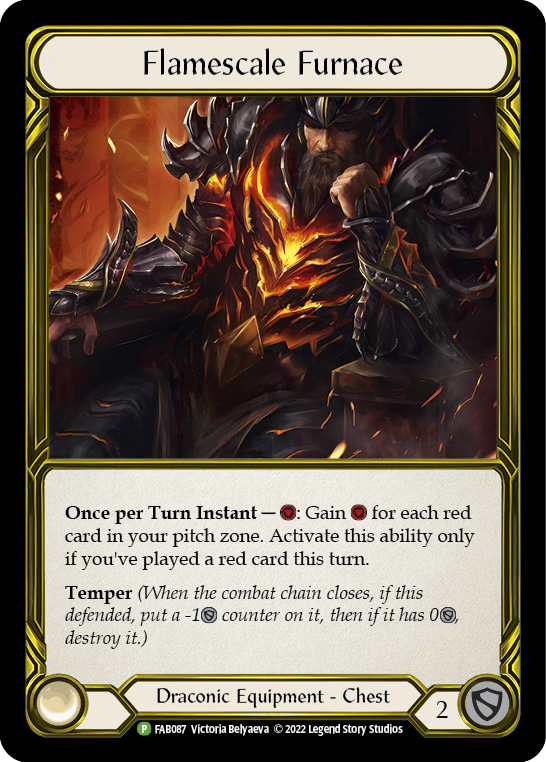
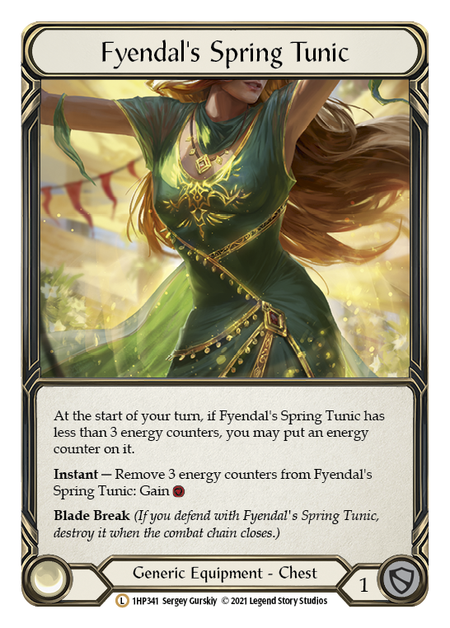
Flamescale Furnace grants some additional blocking power, which can be vital against any deck with powerful on-hit triggers; but it can also be used to convert an all-red hand into a functional turn through its unique ability to multiply the value of red cards in your pitch zone. While this ability is cerntainly used less often than the block value due to Fai's generally consistent resource curve, it's important to remember this ability when such turns arise.
Fyendal's Spring Tunic, on the other hand, simply creates resources, which can lead to some of the strongest possible turns in the game by paying for a key card - like a Belittle or an Art of War - at the start of your turn without costing you a card from hand as pitch. The downside of Tunic is its lack of real blocking value and the slow pace at which it accumulates value in the form of its resource; few Fai games go long enough for you to get more than 1 or 2 resources from the Tunic.
Your arm and leg choices in Fai are both a bit more limited, with most decks defaulting to Tiger Stripe Shuko and Snapdragon Scalers respectively. These are the prime slots to replace with Nullrune pieces, should you need arcane barrier.
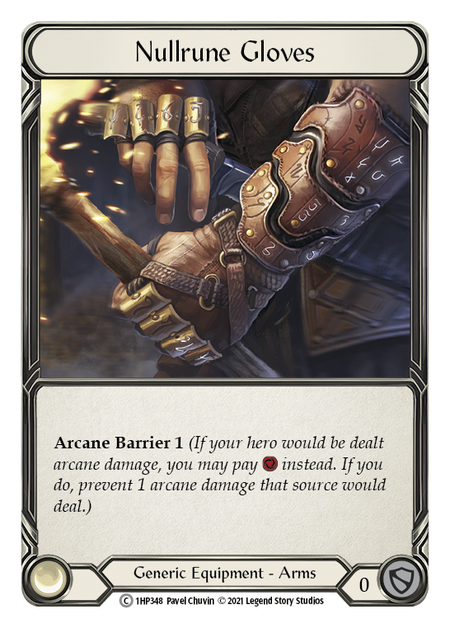
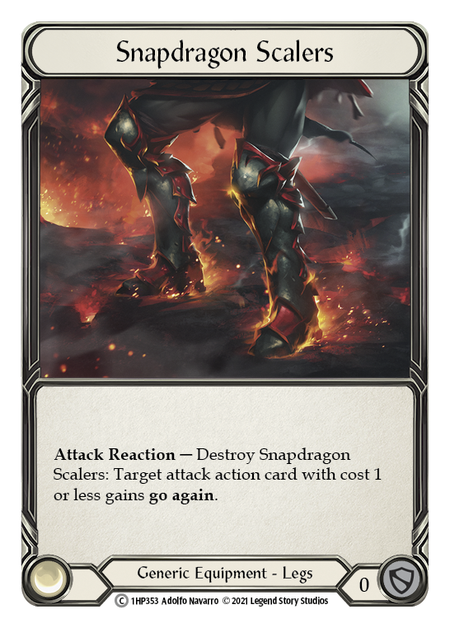
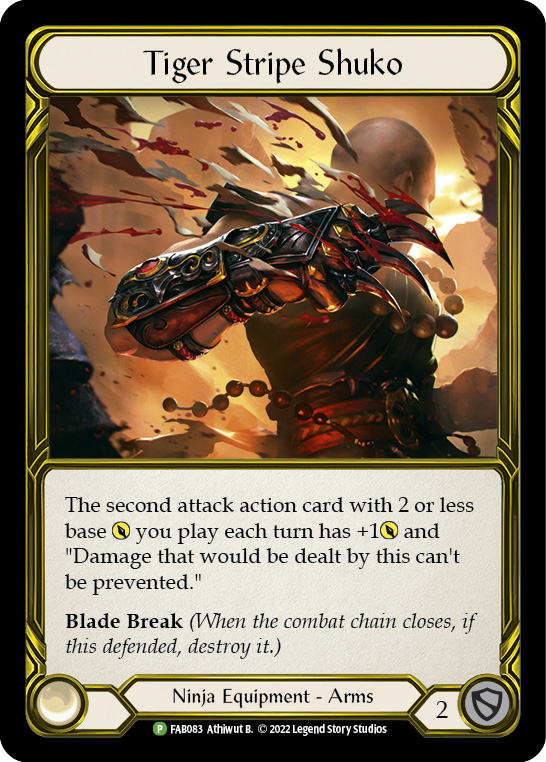
The Stages of an Inferno
Starters
As we discussed with his weapon and his hero ability, Fai gets additional value out of playing multiple Draconic chain links. The best way to get there is to start a combat chain with a single Draconic attack that has built-in go again.

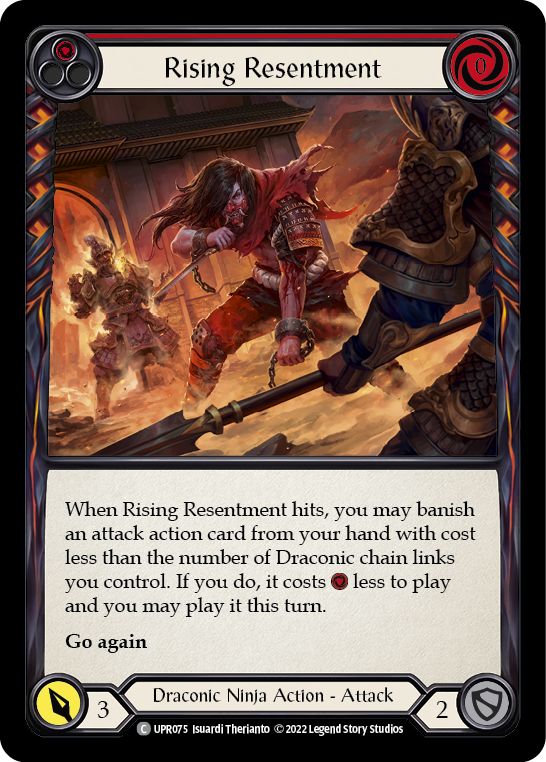
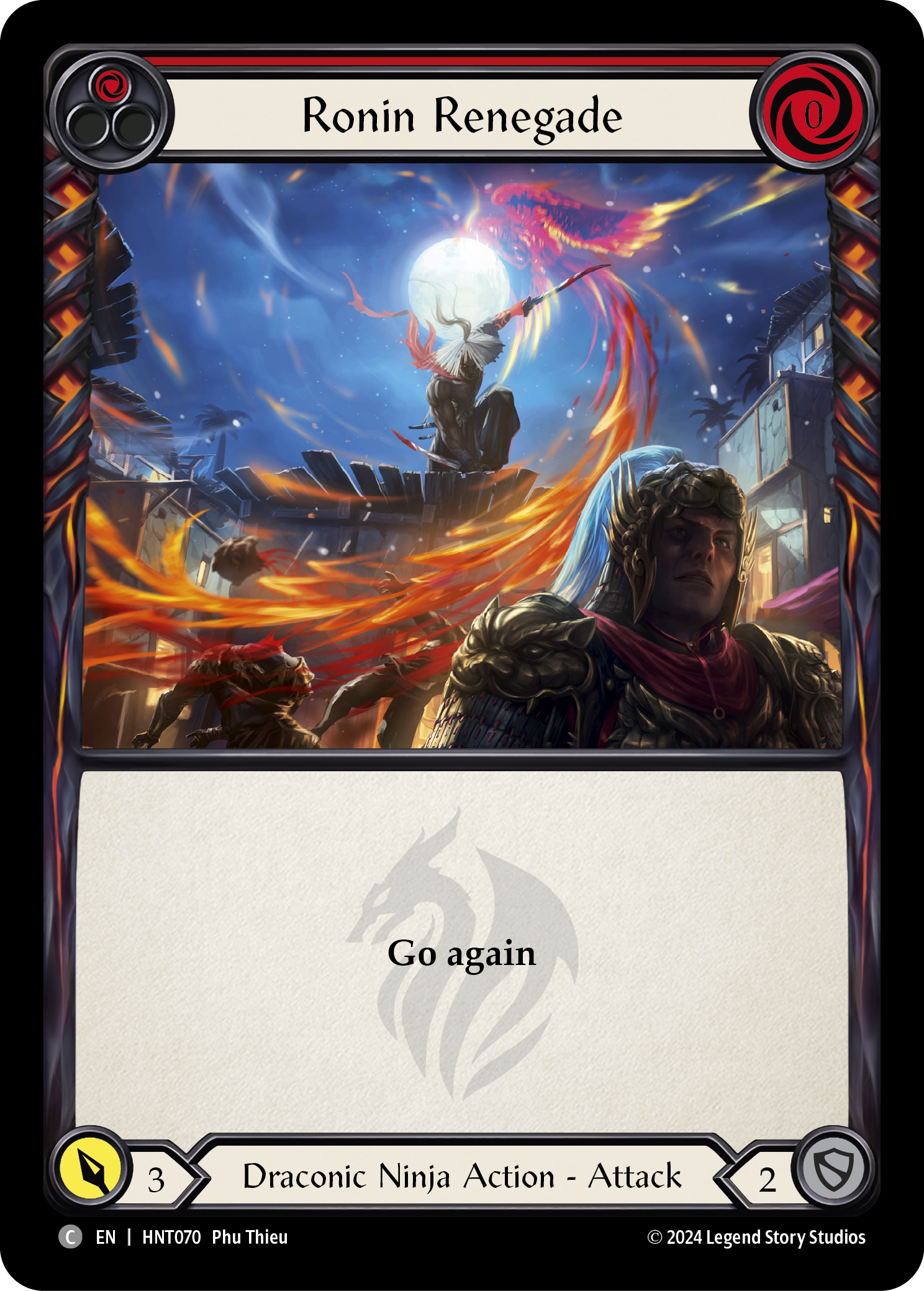
There are many options for this chain starter, but most of them are going to be the 0-cost 3-power Draconic Ninja attacks: Ronin Renegade, Rising Resentment, and Brand with Cinderclaw. From a cost perspective, these are the most efficient, and they let you get 7 damage from three attacks out of a 2-card hand: 0-cost starter, pitch a blue to swing Searing Emberblade, then pay 1 to fetch Phoenix Flame from your graveyard to attack. Of note, this line of play also threatens a card draw off of Mask of Momentum.
Of course, the other options for Draconic starters all have their merits as well, but you'll seldom find a Fai list that doesn't run the full 3 copies of all three 0-cost starters. That being said, let's talk a bit about the other options.
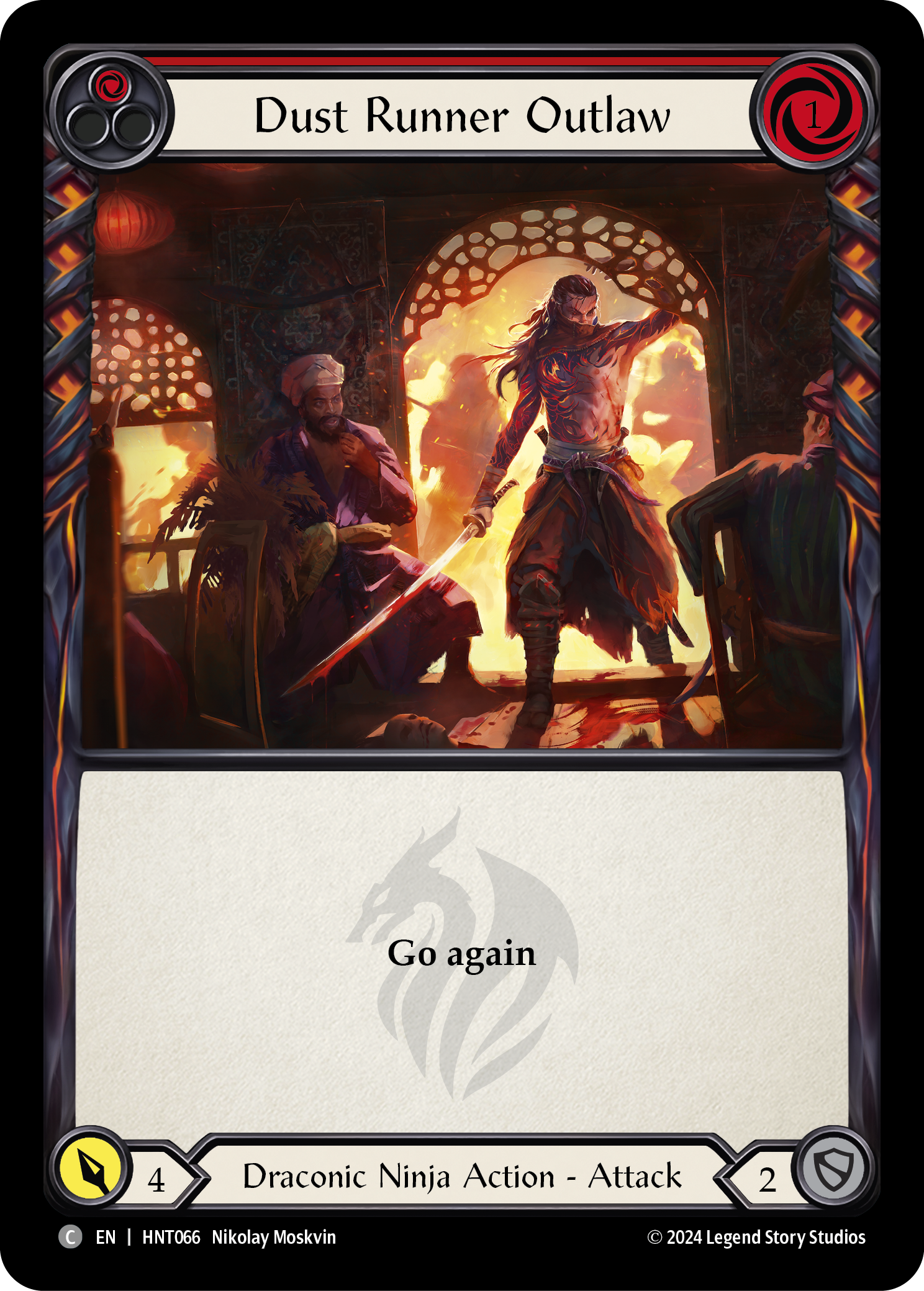
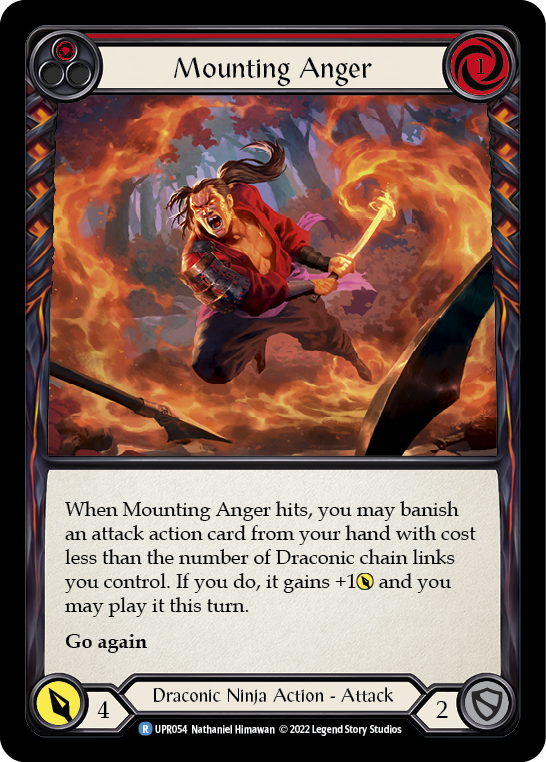
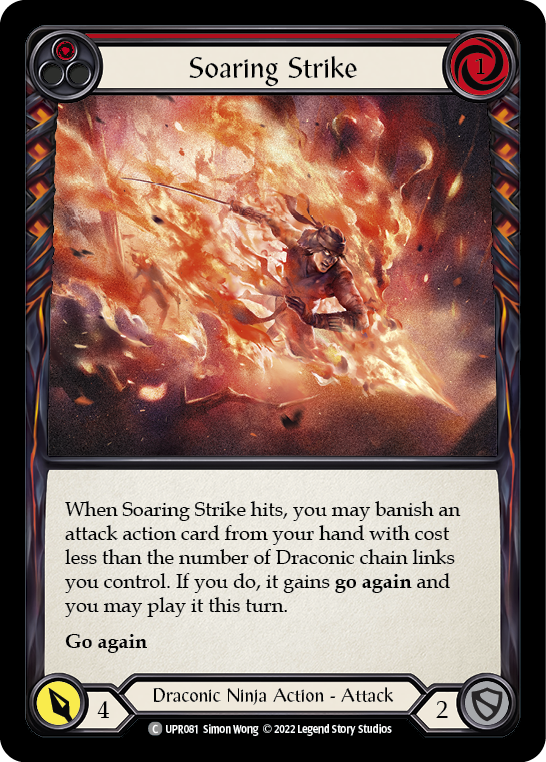
For those familiar with Katsu's play patterns, in the "Leg Tap" slot (1 cost, 4 damage, go again attacks), we have Dust Runner Outlaw (which has no effect), Mounting Anger (which can give an attack in your hand +1 power), and Soaring Strike (which can give an attack in your hand go again). The vanilla 1-for-4 isn't played very often, but the other two can usually be found in Fai lists in various combinations, depending on how you want to gain advantage from their effects.
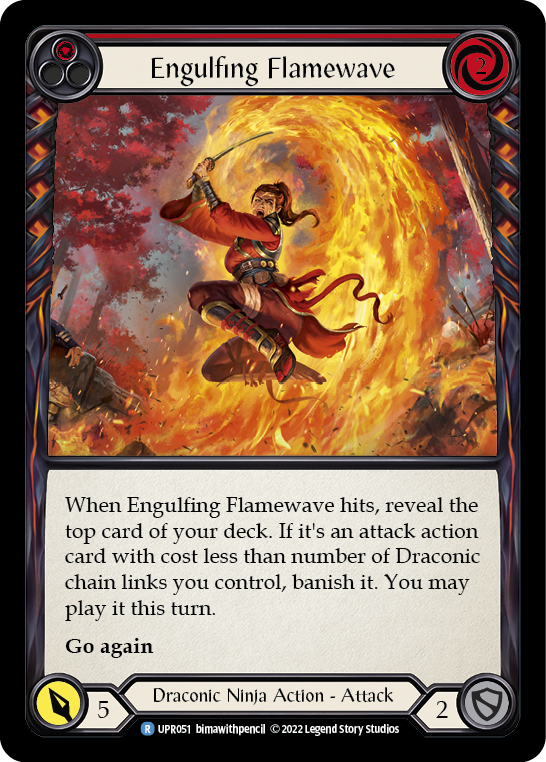
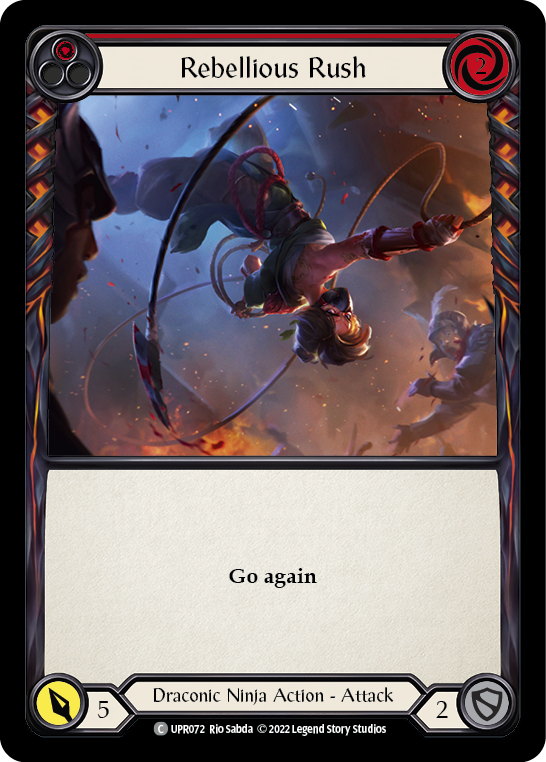
In the "Surging Strike" slot (2 cost, 5 damage, go again attacks), we have Rebellious Rush (which has no effect) and Engulfing Flamewave (which can banish the top card of your deck if it's an attack and let you play it this turn - essentially drawing you a card and extending your turn). Again, the vanilla attack is seldom seen, and even Engulfing Flamewave is often seen as too expensive for most Fai decks, but the ability to gain an additional attack in your turn cannot be understated.
All of these "on-hit" effects can be very effective at demanding blocks from your opponent, which just makes it harder for them to block later in the turn when you potentially threaten them with another on-hit effect, such as from Mask of Momentum. And the more cards your opponent blocks with, the less they threaten you on their turn, likely giving you another full hand to swing back at them when it comes back to your turn.
Extenders
Draconic starters are arguably the most important attacks in your deck when playing Fai, but they often are not the most powerful. That distinction goes to a class of card I'm choosing to call "Extenders" - cards with effects that let Fai play a much larger turn than he otherwise would be able to. This category includes: Art of War, Belittle, Flamecall Awakening, Phoenix Form, Spreading Flames, and Tome of Firebrand.
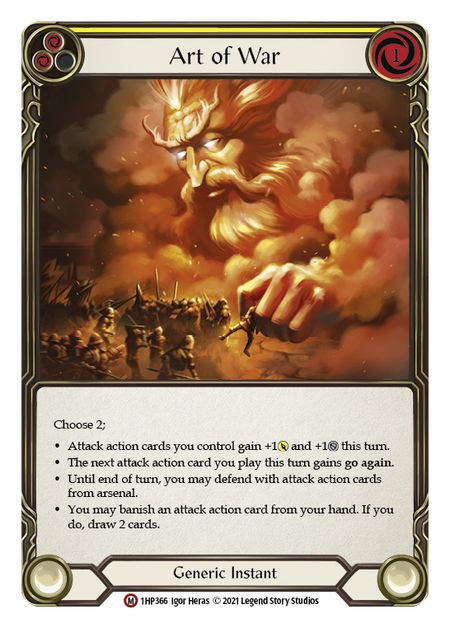
Often considered the most powerful card in Fai's deck, Art of War's impact when played cannot be overstated. At the cost of 1 resource, you can trade 2 cards in your hand (Art of War itself and an attack) for 2 new cards, and then give all of your attack action cards +1 power for the entire turn. Considering you're often going to attack 4-5 times in a turn with attack actions, this is a huge power spike. When you consider that this increase in power will often push your attacks to a breakpoint (all of your 0-cost, 3-power attacks are now 0-cost, 4-power, for example, which is much more difficult to block with a single card), you will likely be threatening a draw with Mask of Momentum, should you be running it.
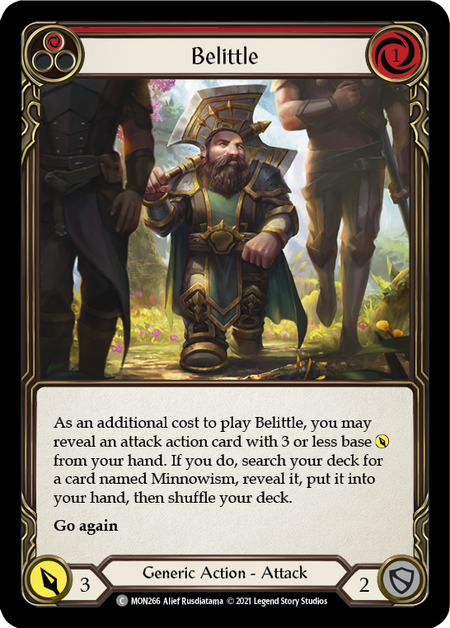
Belittle occupies a bit of an awkward slot in Fai compared to other decks that have run it. Because most Fai lists rely on the Draonic starter to play their turns out, Belittle does nothing to satisfy that requirement. However, Belittle's ability to fix an all-red hand by trading a single card in your hand for a blue Minnowism from your deck makes it so you can then pay for your entire turn, sword and all. It's especially potent in a "combo Fai" build that runs Fyendal's Spring Tunic or Blossom of Spring, as then you can play Belittle using the free resource from your equipment and play the rest of your all-red hand, including your weapon attack, using the resources from the Minnowism you fetched.
Editor's Note: As of the ban on 1/24/23, Belittle is now a Blitz-only consideration for Fai. The information above is still worth knowing as it's an incredible tool for young Fai.
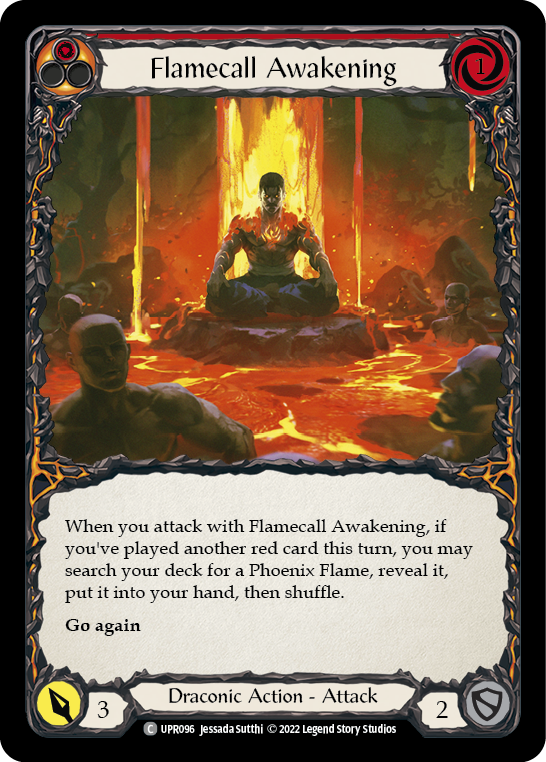
While there is merit to running a deck with only 1 Phoenix Flame, most Fai lists will opt for 2-3, solely to take advantage of this powerful card. On the surface, Flamecall Awakening looks like a Dust Runner Outlaw that you have to work for - but this card has a much higher ceiling than that due to the other synergies present in the deck. At its base level, spreading 4 damage across 2 attacks makes it more difficult for your opponent to block all of it - take a look at Rosetta Thorn for how powerful an effect split damage can be - but in addition to that, Flamecall Awakening becomes 1-cost for 6-power if you can play it on the same turn as an Art of War precisely because it gets to spread its damage across 2 different attacks. There are other merits to Flamecall Awakening beyond what I've discussed here, but hopefully you begin to see its value.
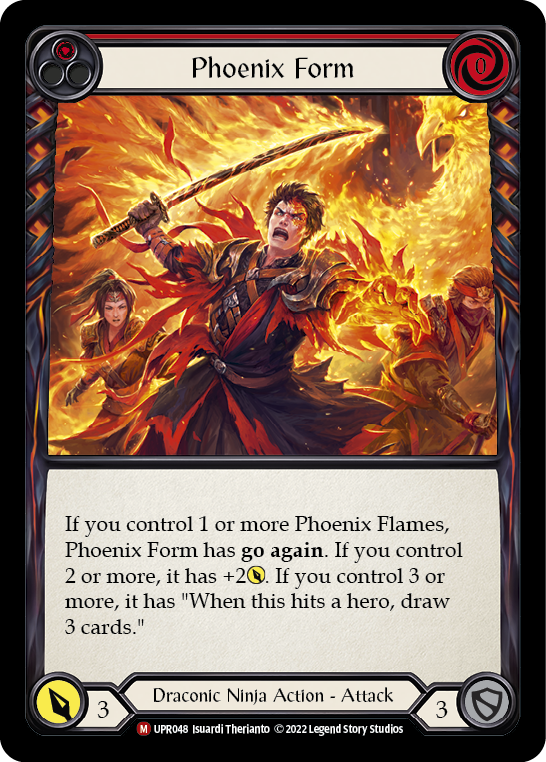
While Phoenix Form has fallen out of favor in current builds of Fai, there is no denying its power if you can line it up with multiple Flames on a turn. A 0-cost, 5 power attack is good enough on its own, and reasonably easy to set up if you're running Rise from Ashes and Flamecall Awakenings in your deck; but the final kicker effect of drawing 3 cards on hit is the ultimate turn extender.
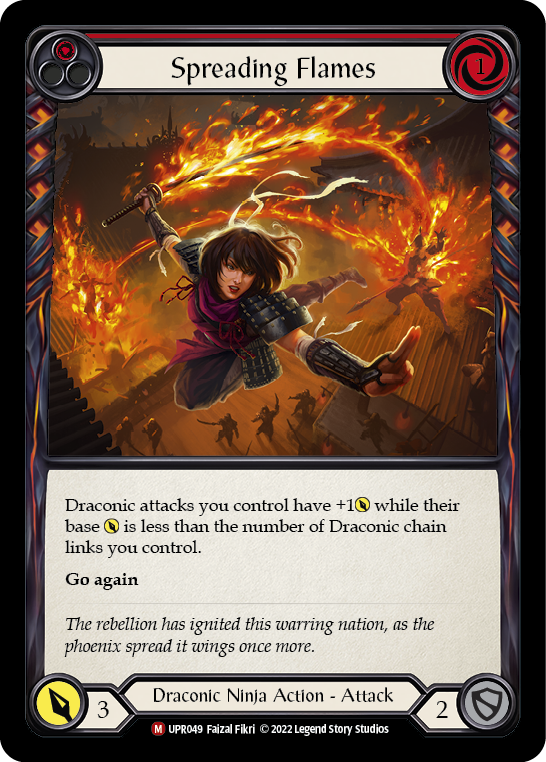
Technically speaking, Spreading Flames is another Draconic starter. However, calling it such vastly downplays its potential. While not as immediately impactful as Art of War and requiring a little bit more setup to get the full value from when compared to other cards in this list, Spreading Flames nevertheless can often generate 6-7 value from the 1 resource you spend on it. It simply requires some specific sequencing from you on your turn to realize its full potential.
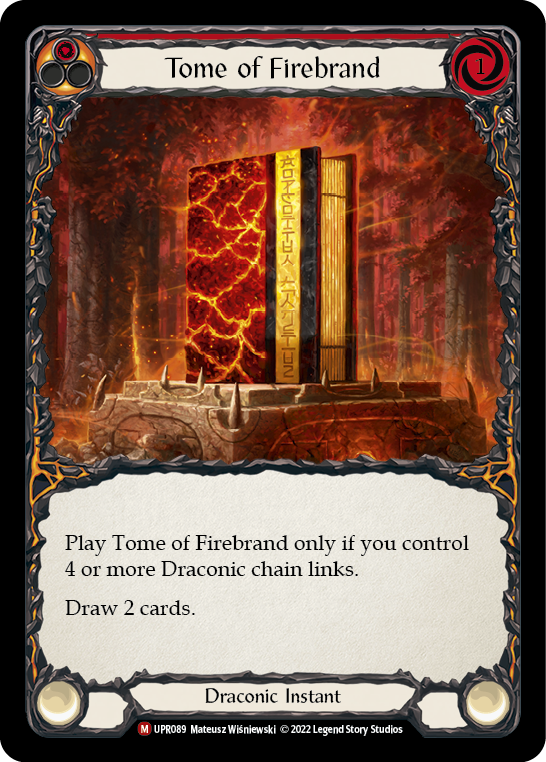
As we've seen with both Art of War and Phoenix Form, the best way to extend your turn is by drawing cards. Fai can very reasonably get to 4 Draconic chain links, given that he has 2 guaranteed a turn in the form of his sword and the recurring Phoenix Flame. While Tome of Firebrand has not been seen in many lists lately, it is a very powerful card as long as you can satisfy its condition to play.
With all of these cards, often the best strategy is not to play it as soon as you draw it, but instead to arsenal the card until you see it in combination with another one of these "Extender" cards. By combining the effects of Spreading Flames and Art of War, or Belittle and Art of War, or Spreading Flames and Flamecall Awakening, you can create some of your highest-damage turns possible.
Finishers
At a certain point, you will run out of attacks and your turn will end. In that case, what better way to end your turn than with a powerful attack? Without the need to continue your turn, you can trade your 'action point rebate' for a more powerful attack to close your combat chain. There are several choices to consider, and the right mix of these chain enders with the other category of attacks will be important to consider when putting your deck together - after all, if you only draw Finishers, you won't have much of a turn.
There are a lot of options here, especially when you consider that any generic attack could be considered a reasonable option as a finisher, but some of the more common options include the following:
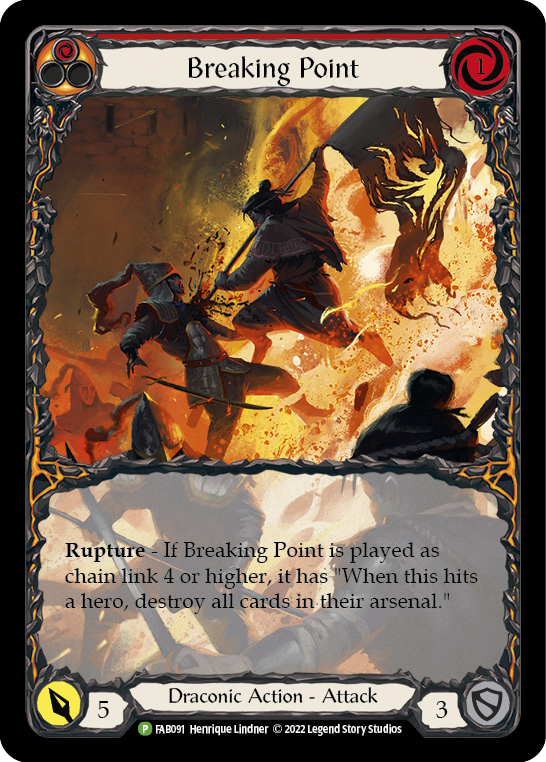
Destroying your opponent's arsenal with Breaking Point will deny them options on their turn. Oftentimes, if this hits, it removes a key piece of your opponent's gameplan as they chose to save that arsenaled card for a later turn. And this is likely to hit as it comes after at least 3 previous attacks.
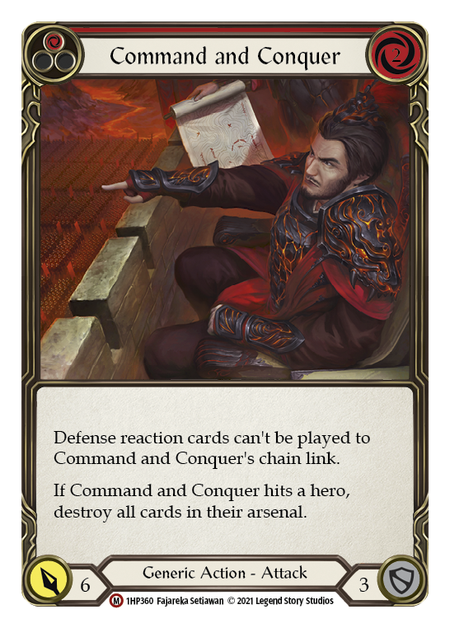
As above, destroying your opponent's arsenal is very powerful. While Command and Conquer costs more than Breaking Point, which can make it a bit awkward for Fai decks to go super wide leading up to playing it, it makes up for it with added flexibility and power. It hits harder. It stops your opponent from blocking it with defense reactions. And you can play this off a 2-card hand to swing back tempo.

Enlightened Strike is a bit of an in-between case, as you can reasonably play this attack as an extender on your turn by choosing its go again mode. Most of the time, though, you'll want to swing this attack at your opponent for 7 power, either at the end of a chain or as your only attack for the turn off a 2-card hand. This gets especially powerful on a turn you've played Flamecall Awakening, as then you can trade that 1-power Phoenix Flame for a 7-power attack.
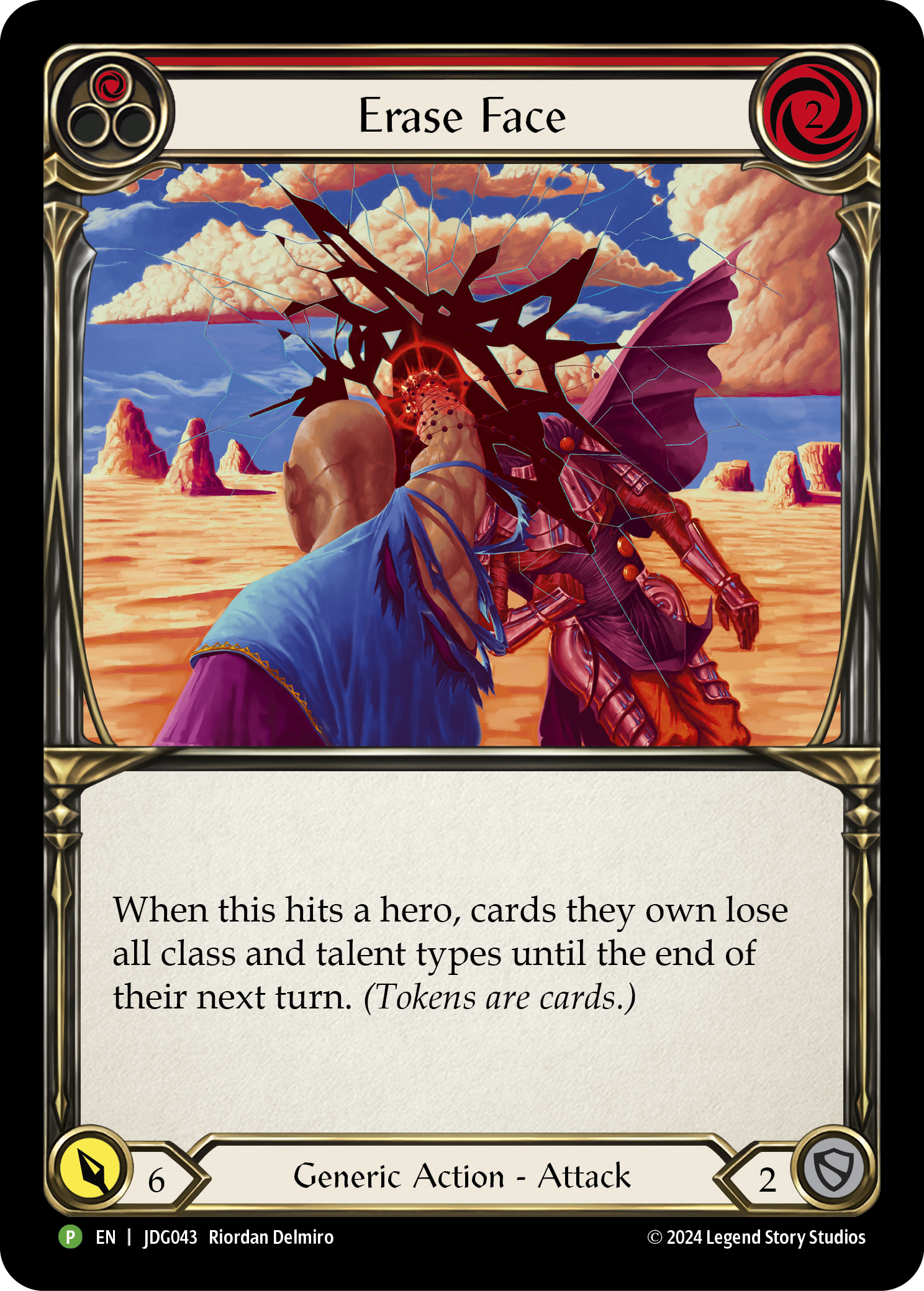
Similar to Command and Conquer, Erase Face is a bit outside Fai's typical cost curve, but it also makes up for it with a disruptive on-hit effect. The trick with this card is knowing who to play it against, and who to side it out against. There are many heroes who won't care much if you hit them with this attack, as they don't get a tremendous amount of utility out of class or talent synergies. But then there are some (Dash, Viserai, even Fai on certain turns) where getting hit with this shuts down their entire gameplan.
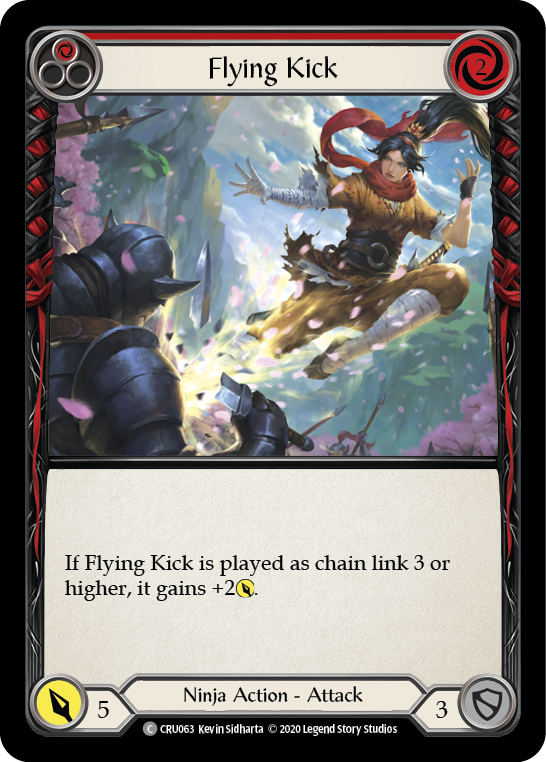
Flying Kick is simply vanilla damage, but above-rate vanilla damage. If your deck can support the higher cost with additional blues, this can be a reasonable choice.
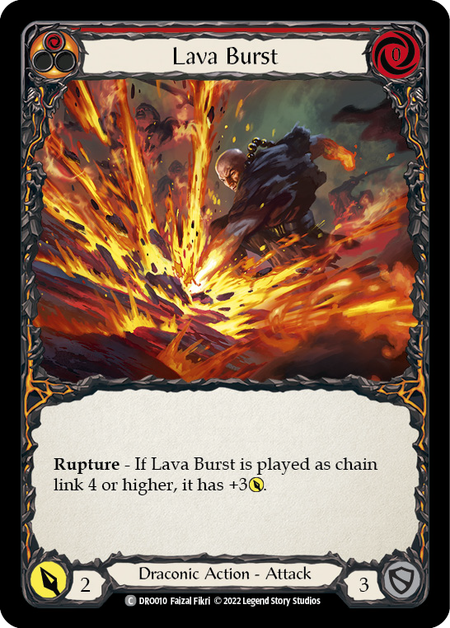
The premier finisher in Fai, Lava Burst is 0-cost, 5-damage, searchable by Mask of the Pouncing Lynx, buffed by Spreading Flames, and buffed by Tiger Stripe Shuko. There's not much to say because this attack does one thing. Simply. And very effectively.
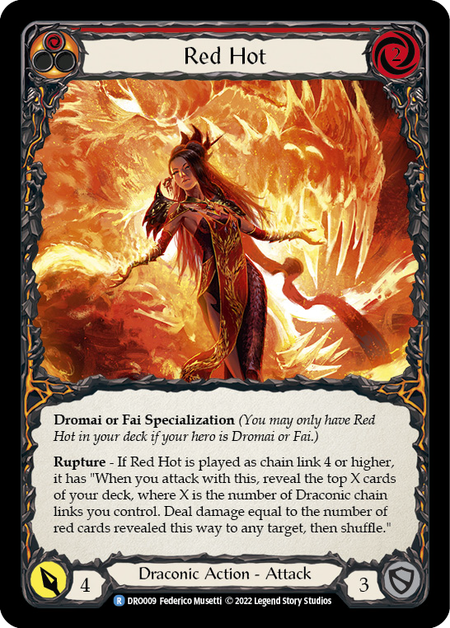
Despite being a specialization, Red Hot is more of a niche pick; but the unblockable damage from this finisher can be devastating to most opponents, as few decks are including the tools to prevent it. This does require you to run more Draconic cards to get the full effect, but it should result in a minimum 2-cost, 7-damage play most of the time.
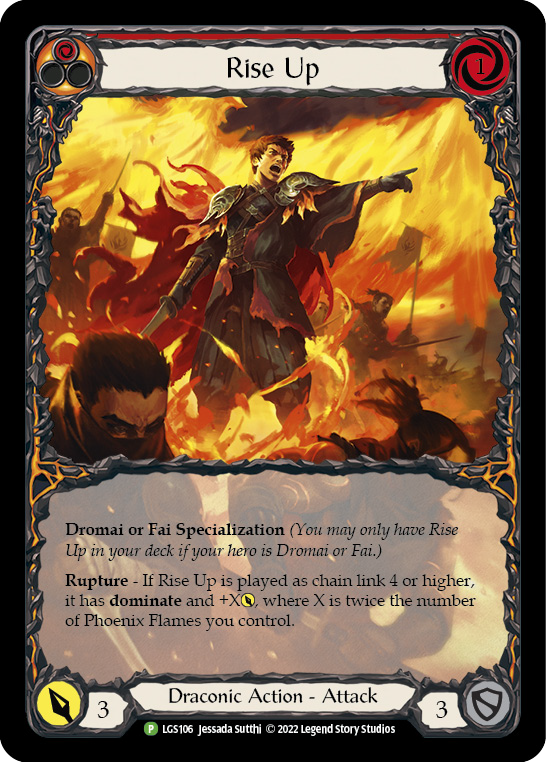
Another effect that grows stronger from significant Phoenix Flame support, Rise Up's dominate means that you can force through the last damage you need even off the back of a single Phoenix Flame on the combat chain.

Much like Lava Burst, Salt the Wound does one thing and it does it very well. Similarly searchable off of Mask of the Pouncing Lynx, Salt the Wound has the slight upside of generating 2 resources if you need to pitch it, as well as having no limit on the amount of damage it can deal if you've had 4, 5, 6, or even more attacks hit in a turn. The downside is that it does not have Lava Burst's consistency, requiring you to hit with at least 3 attacks before it matches or exceeds the other attack's power level.
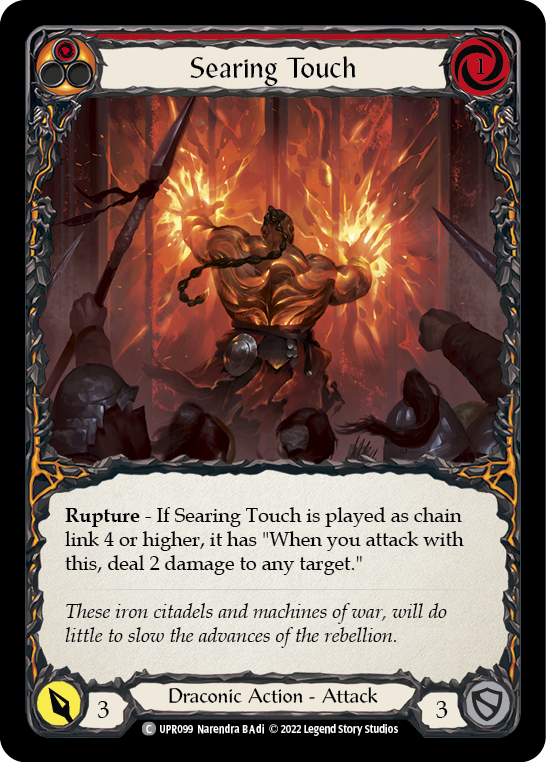
Another niche choice, Searing Touch also deals unblockable damage, which can make it a potent finisher against decks that like to block a lot. It can also be useful against Dromai by allowing you to clear 2 dragons with a single attack. If Allies become more prevalent in the metagame, this attack could see more play.

Snatch is a classic finisher. Drawing cards is always good. Your opponent will be in a lose-lose situation when you threaten to draw a card with your third attack on the combat chain (likely a Phoenix Flame) and then follow it up with a Snatch to threaten drawing a card again. Also great when it's your only card in hand, as you can present pressure to your opponent and are still likely to get an arsenal for your next turn.
Burn Out
Fai is a fun, exciting, aggressive hero to play. There are a wide variety of options for customizing your version of a Fai deck, all while remaining competitive at the highest levels. As metagames shift, Fai will likely continue to have the tools to adapt and remain one of the fastest aggro decks in the game.


